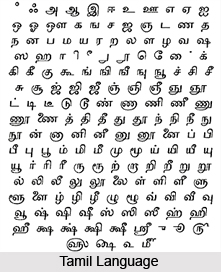
The hymns of the Saiva saints were later collected into twelve anthologies called Tirumuraikal. Nilakesi are the contribution of some Jain authors.īetween 600-900 AD, the Tamil literature came under the influence of Saiva and Vaishnava saints called Nayanmars and Alvars respectively. Yasodharakaviyam, Chulamani, Perunkathai, Nagakumara kaviyam and The post-Sangam period (200-600 AD) is notable for the composition of five great Tamil epics Silappadikaram, Manimekalai, Jivaka chintamani, Valaiyapati and Kundalakesi. The Sangam literature provides very valuable information on the social, economic and political life of the people living in deltaic Tamil Nadu in the early Christian centuries. The Sangam literature, unlike the Rig Vedic texts, was secular in nature and revolved around the themes of various heroes and heroines. Mahatma Gandhi, India's father of the nation, said, I wanted to learn Tamil, only to enable me to study Valluvar's Thirukkural According to the Mahatma, "It is a treasure of wisdom. Among them, the most notable is Tiruvalluvar's Tirukkural or Kural with philosophy, ethics and wise maxims being the main emphasis.

In third Sangam period, a collection of minor works called Padinen-kizhkkanakku which deals mainly with moral virtues was also produced. And Pattuppattu consists of the following ten idylls: Tirumurugarruppadai, Porunararruppadai, Cirupanarruppadai, Pattinappalai, Kurincippattu, Nedunalvadai, Maduraikkanci, Malaipadukadam, Mullaippattu and Perumpanarruppadai.

Natrinai, Kuruntogai, Ainkurunuru, Padirruppattu, Paripadal, Kalittogai, Ahanuru and Purananuru are the eight anthologis of Ettu-thokai. Sangam poetry is unique and unparalleled in terms of beauty and greatness. It is written in the form of noorpaa (short formulaic compositions).Ī collection of lyrics, known as Ettu-thokai or Eight Anthologies, and another one of longer poems, known as Pattu Pattu or Ten Idylls are the main literatures of the third Sangam. Tolkappiyam is a work on the grammar of the Tamil language and the earliest extant work of Tamil literature. Unfortunately Tolkappiyam is the only available work of these two Sangams. Most of the works relating to the first two sangams dealt mainly with music and dance. Three sangams at Madura, Kapatapuram and northern Madura respectively are believed to have existed. The compilation of the corpus of literature produced in this Congress (Sangam) is known as the Sangam literature. The earliest Tamil literature goes back to the Sangam period perhaps from 600 BC-200 AD. Some believe that Proto-Tamil, the common stock of ancient Tamil and Malayalam, apparently diverged over a period of four or five centuries from the 9th century onwards, resulting in the emergence of Malayalam as a language distinct from Proto-Tamil.Tamil therefore, had a huge influence in the early development of Malayalam. Until about the 9th century, Malayalam was a dialect of ancient Tamil, also known as Proto-Tamil. Tamil is also spoken by a significant minority in more than fifty fiveĭiaspora countries of the world including Malaysia and Mauritius.Malayalam, the native language of the neighbouring state of Kerala is considered as the closest major relative of Tamil and its resemblance to Tamil is so striking that it almost sounds like a variation of Tamil language. It has the credit of being one of the official languages in the countries of Sri Lanka and Singapore. A classical language is defined to own a rich literature that is ancient with an independent tradition that arose mostly on its own. However it has maintained its tradition, uniqueness and identity as the expressive medium of a cultural community and earned the accolade of being the first Indian language to be declared as a Classical Language by the government of India in 2004. It is one of the twenty-two scheduled languages of India.įrom the pre-Christian days of the Indian cultural evolution it has gained the same prominence as the major northern languages, mainly Sanskrit. It is the official and administrative language of the State of Tamilnadu and the Union territory of Puduchery. It belongs to the southern branch of the Dravidian languages. The name 'Tamil' is a little differently pronounced anglicized version of the three letter native name of the Dravidian language spoken mainly by people of Tamilnadu, a state in the Indian subcontinent.


 0 kommentar(er)
0 kommentar(er)
